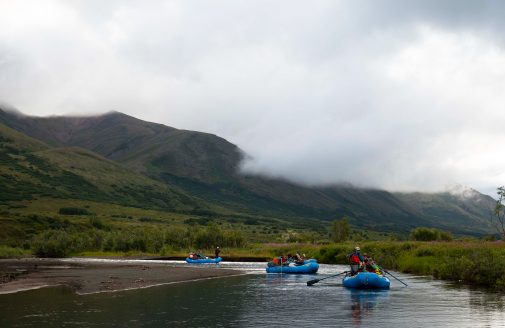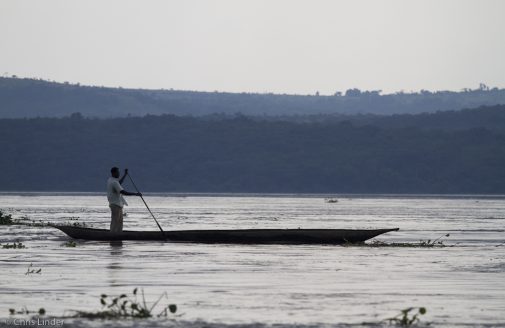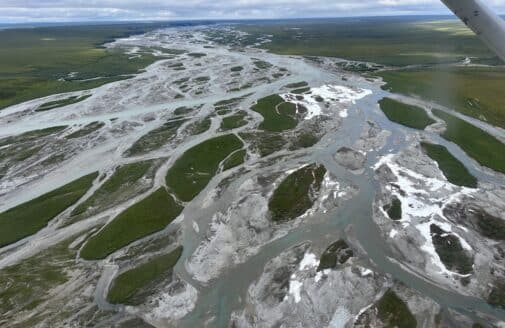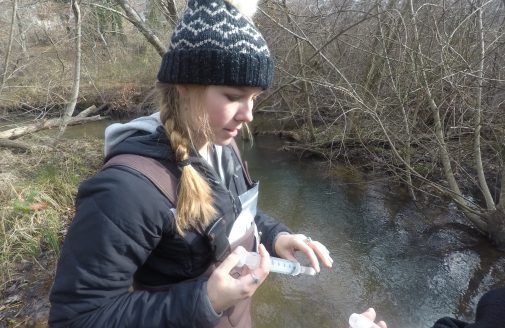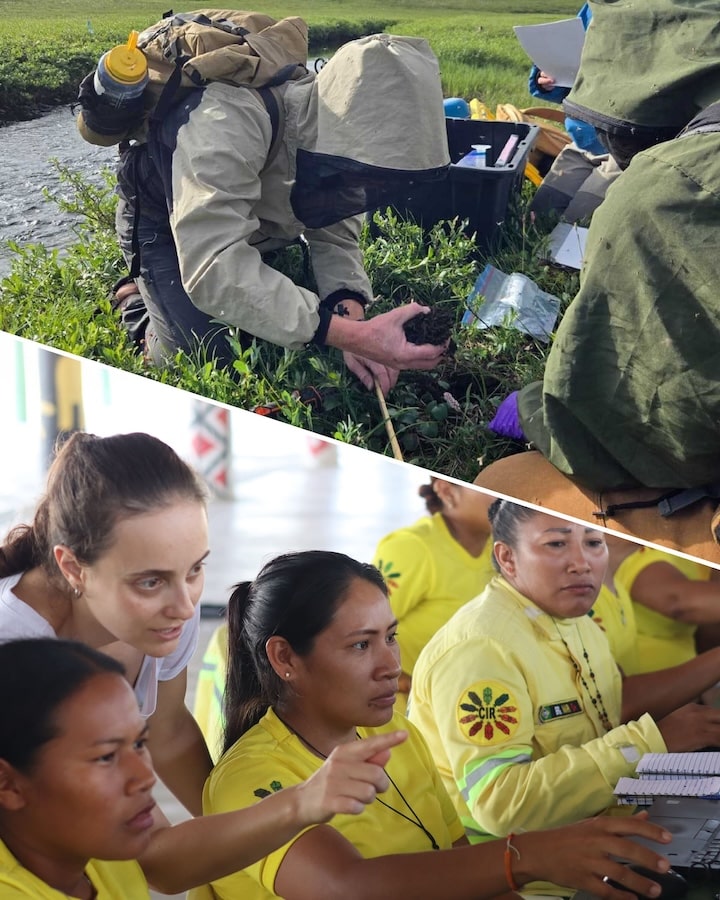Harnessing passion: The rapid growth of Science on the Fly
Data and water sample collection in the Kwethluk River in the Yukon Delta National Wildlife Refuge.
photo by John Land Le Coq
In 2019, fly-fishers with the Telluride Angler Fly Shop in Telluride, Colorado began sampling water when they went out to different fishing spots. Some key introductions followed from this initial group of fly-fishing citizen scientists, and Science on the Fly was officially founded by the Woodwell Climate Research Center and Fishpond, a Colorado-based fly-fishing and outdoor recreation company. Jumping quickly from 40 to 300 sites in its first year, Science on the Fly has been growing exponentially since its creation in 2019.
“People just started coming out of the woodwork,” explains Woodwell’s Dr. Max Holmes. “[The volunteer base] comprises engaged and concerned people who can weigh in on issues related to the rivers and climate. And what’s clear is that there’s the capacity to get a lot bigger.”
The goal of Science on the Fly is to create a consistent, long-term monitoring program of river health across the world. This is accomplished by harnessing the enthusiasm and access to rivers of different members of the fly-fishing community. Essentially, Science on the Fly provides the framework to support a vast network of fly fishers eager to help assess the health of the rivers they fish. Scientists at the Woodwell Climate Research Center can then analyze the water samples for different nutrients, such as nitrate, phosphate, and dissolved organic carbon (DOC), all of which are important to assessing the health of a river ecosystem.
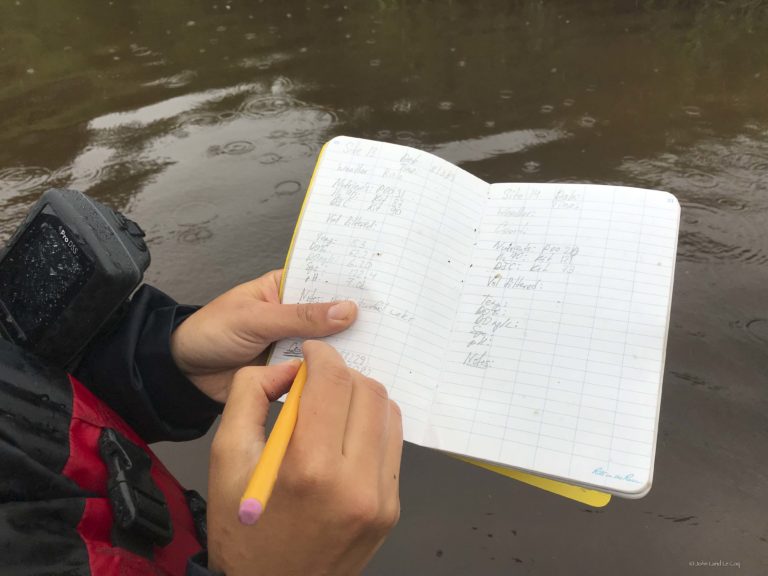
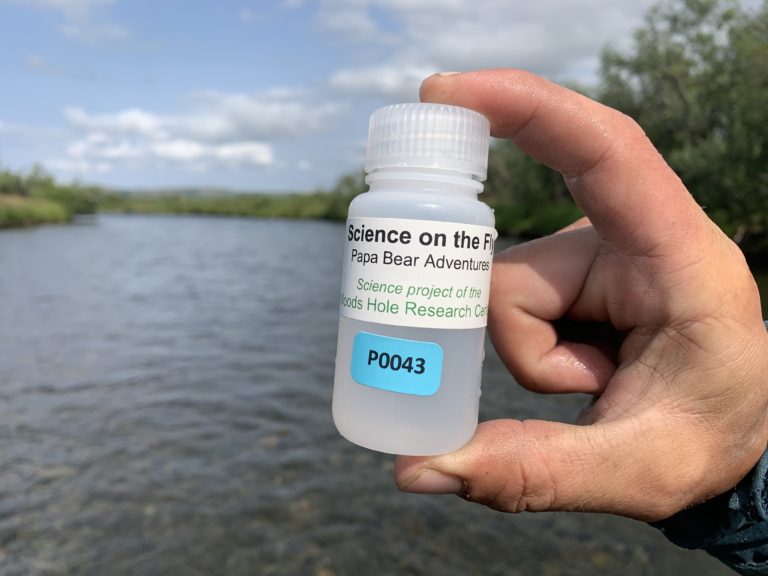
Collecting samples and recording data.
photos by John Land Le Coq
“It’s unbelievable how many people want to be a part of this thing,” describes Dr. Holmes. And what’s special about Science on the Fly, is that individual volunteers can have a large impact on the overall work of river health monitoring. Each volunteer is important, providing access to a specific river site and each volunteer serves as a node that connects Science on the Fly to even more volunteers. Currently, Science on the Fly coordinates a group of volunteers sampling more than 300 sites across 6 countries.
Allie Cunningham currently serves as the volunteer coordinator and social media manager for Science on the Fly. As an avid fly fisher, Cunningham ended up in Telluride, Colorado after college working at a local fly shop. As her passion for fly fishing continued to grow, so did Cunningham’s desire to do more than simply fishing. After getting involved with Science on the Fly as a volunteer, Cunningham eventually transitioned to serve as volunteer coordinator in order to bring more people into the program. “A lot of our growth happens by word of mouth,” Cunningham explains. “Volunteers share their passion for fly fishing and involvement with Science on the Fly with their local fly-fishing communities and that brings us more volunteers.”
“All anglers want to be conservationists but not all of them know how best to do this,” Cunningham describes.
Science on the Fly provides a unique framework for passionate fly-fishers to also be watershed stewards. Science on the Fly volunteers take a water sample from a designated site approximately once per month. After freezing the sample for up to three months, the volunteers ship the sample to the Woodwell Climate Research Center laboratory where the samples are analyzed and the data is collected and made available to the public. In this way, Woodwell serves as the central hub where water samples from around the world converge. And Woodwell Climate scientists play a role in processing, collecting, and representing the water sample data to better understand and protect watersheds globally.
Cunningham describes the role Woodwell plays in shaping the Science on the Fly community: “Science on the Fly is not a random non-profit, it has Woodwell and Woodwell’s science and team as its backbone, which makes it more credible and impactful.”
When contemplating the rapid growth of Science on the Fly, Cunningham attributes a lot of the interest to the passion of the fly-fishing community: “If you know you have the patience and passion for fly fishing, you want to get more involved, and Science on the Fly is the framework for being able to be a better steward.”
The consistent sampling regimen that Science on the Fly volunteers partake in helps illuminate some of the changes watersheds are experiencing in response to climate change.
“Fly fishing is a shared passion that relies on a good environment so you’re not too many steps from talking about climate change,” explains Dr. Holmes. “If volunteers care about the rivers and water quality, they’re going to start hearing about climate change and caring about the impact.” In this way, Science on the Fly is able to build trust around the shared love of fly fishing and then spark conversations addressing issues of climate change and watershed protection. “There may be different political views, but we all care about fish and fishing,” says Dr. Holmes.
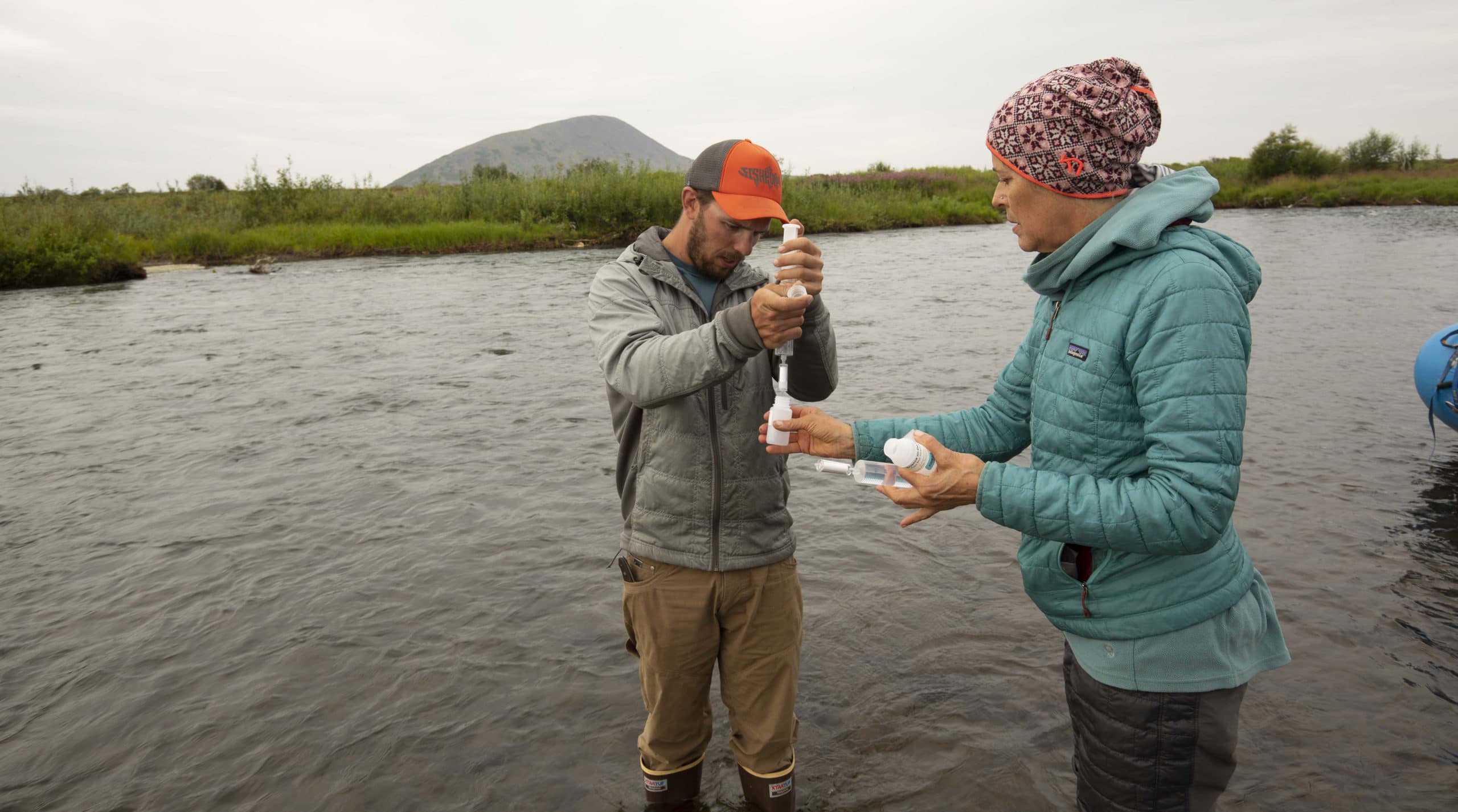
Volunteers collecting water samples in Alaska’s Kwethluk River.
photo by John Land Le Coq
Holmes and Cunningham expect that Science on the Fly will continue to grow in order to meet the engagement of the fly-fishing community. And this growth will help expand our knowledge of global river health. “We’re already seeing trends in the river data,” explains Dr. Holmes. “And my biggest interest is how things change over time, so we want to keep this going for the long-term.”
Latest in Water
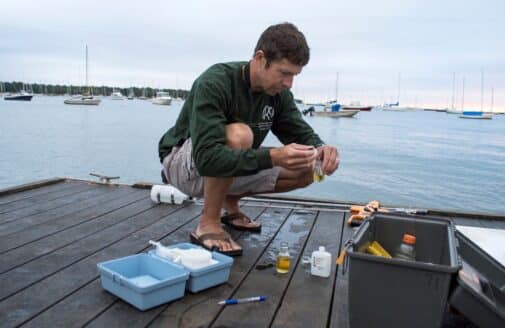
- In The News
Notes from an ecologist: Factoring in rivers and streams when studying bay health
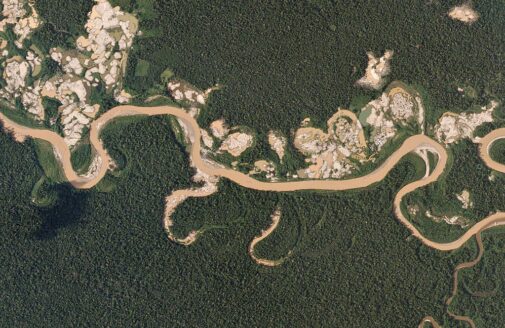
- In The News




